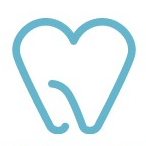Dental Care Guide
As the hardest part of the human body, teeth are not indestructible. To protect our teeth correctly, we need to understand their classification and protection methods.
1. Understand the classification of teeth
The classification of teeth includes professional dental cleaning and daily oral hygiene.
1. Professional dental cleaning
Professional dental cleaning includes ultrasonic cleaning, sandblasting cleaning, and manual cleaning. The common methods are ultrasonic cleaning and sandblasting cleaning, which are suitable for different dental conditions.
2. Daily oral hygiene
Daily oral hygiene refers to the oral hygiene methods in daily life. The most common method is brushing teeth, and there are also mouth rinsing, dental flossing, and toothpicks, etc.
2. Reasons for teeth cleaning
The reasons for teeth cleaning include the following:
1. Formation and removal of dental plaque
Dental plaque is the culprit of periodontal disease. If not removed properly, tartar will form and hinder tooth brushing, leading to gingivitis, periodontitis, and even tooth loosening and loss.
2. Presence and removal of tartar
Tartar cannot be removed by brushing alone. Teeth cleaning can remove tartar on the gums and shallow subgingival tartar.
3. Accumulation of stains
Food and colored drinks can accumulate pigments on teeth. Scaling can remove these pigments. However, the surface of the teeth is not smooth, and the pigments cannot be completely removed.
The main purpose of scaling
The main purpose of scaling is to prevent and treat oral diseases, not just for aesthetics. Scaling can reduce inflammation of gingivitis and periodontitis, but it cannot cure periodontitis. Further professional treatment is needed.
Indications and contraindications for scaling
Indications for scaling include treatment of gingivitis, periodontitis, preventive treatment, and preparation before other oral treatments.
Contraindications for scaling include patients with cardiac pacemakers, patients with malignant tumors in the gingiva, angina, myocardial infarction, hypertension and heart failure patients, patients with acute local inflammation, patients with bleeding disorders, and patients with acute infectious diseases.

